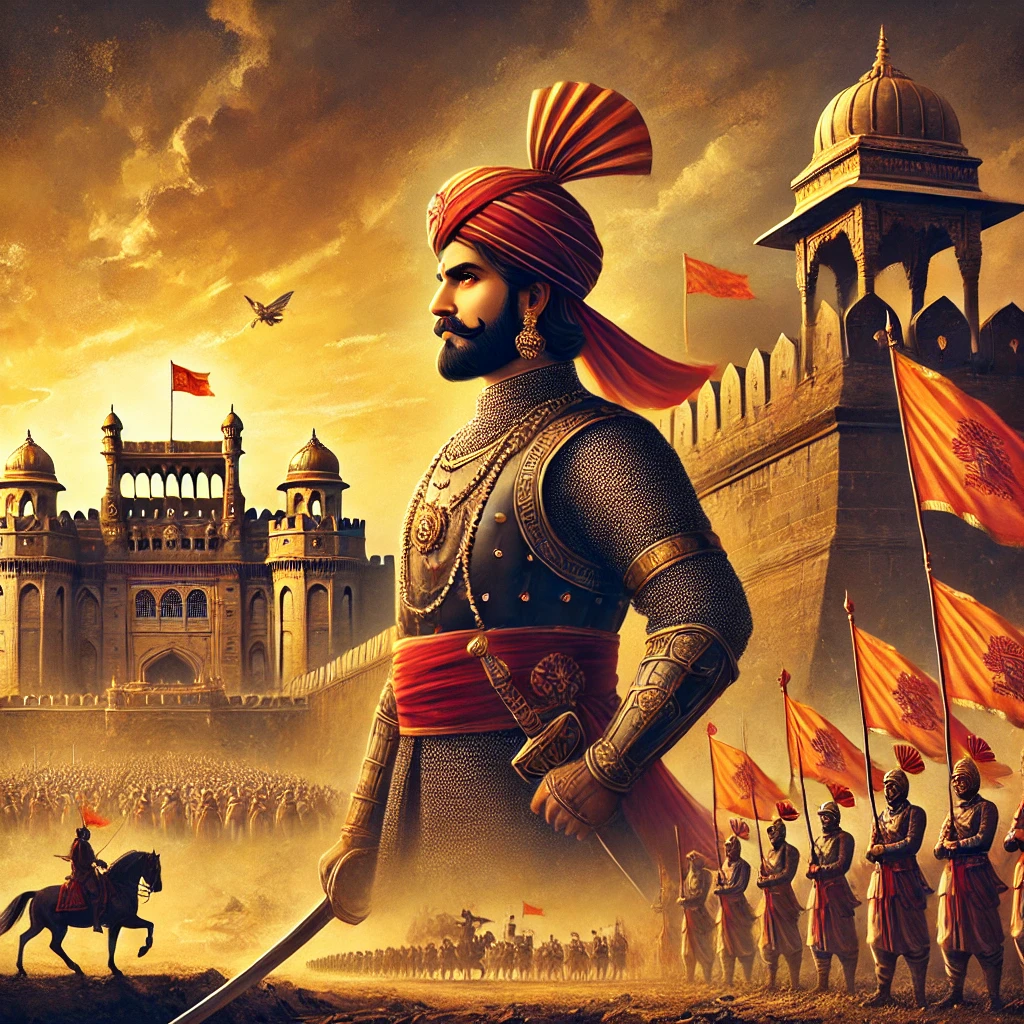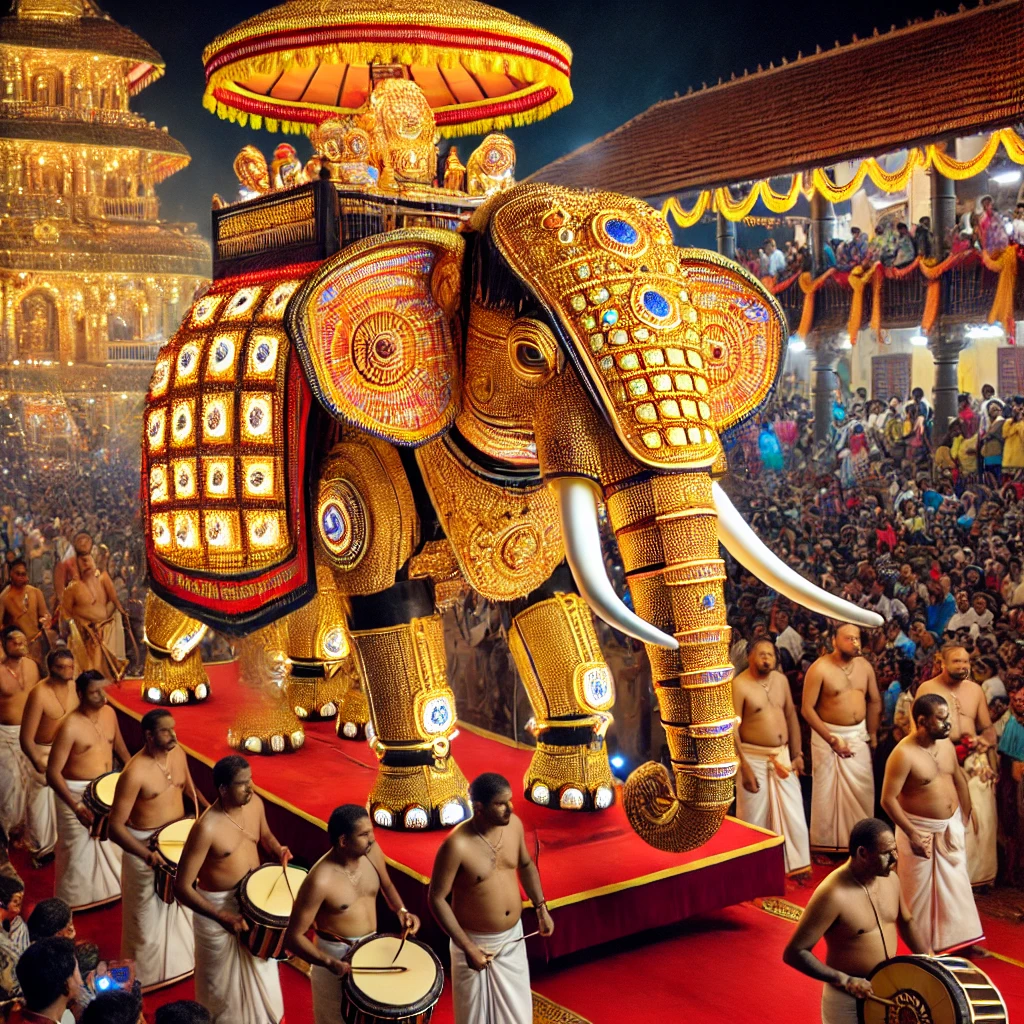Chhatrapati Shivaji Maharaj is one of the greatest warriors and rulers in Indian history. He was the founder of the Maratha Empire and a true symbol of bravery, intelligence, and leadership. His contribution to Swarajya (self-rule) and his extraordinary military strategies continue to inspire generations. On the occasion of Shivaji Maharaj Jayanti, celebrated on February 19, we pay tribute to his remarkable legacy.
Early Life and Birth
Shivaji Maharaj was born on February 19, 1630, at the Shivneri Fort in present-day Maharashtra. His father, Shahaji Bhosale, was a military commander, and his mother, Jijabai, played a crucial role in shaping his character. She instilled in him values of righteousness, bravery, and devotion to Hindu culture.
Establishment of Swarajya
One of the greatest achievements of Shivaji Maharaj was the establishment of Hindavi Swarajya. He challenged the powerful Mughal and Adil Shahi rulers to create an independent Maratha kingdom. His governance was based on justice, religious tolerance, and people’s welfare.
Key Features of His Administration:
- Efficient revenue system with fair taxation policies
- Strong military organization and strategic warfare
- Welfare policies for farmers, traders, and citizens
- Religious tolerance and protection of all communities
Military Strategies and Forts
Shivaji Maharaj was a master of guerrilla warfare. His strategies enabled him to defeat much larger enemy forces. He built and strengthened over 300 forts, the most famous being Raigad Fort, Pratapgad Fort, and Sindhudurg Fort.
His naval strength was also remarkable. He established a strong Maratha Navy, which protected India’s coastline from foreign invasions.
Major Battles and Victories
- Battle of Pratapgad (1659) – Shivaji defeated the powerful Adil Shahi general, Afzal Khan.
- Siege of Panhala (1660) – A display of his strategic brilliance against Adil Shah’s forces.
- Escape from Agra (1666) – One of his most famous events where he tricked Aurangzeb and escaped imprisonment.
- Battle of Sinhagad (1670) – A legendary battle where his commander, Tanaji Malusare, sacrificed his life.
Important Treaties Signed
- Treaty of Purandar (1665): Signed with the Mughal general Raja Jai Singh I, where Shivaji surrendered 23 forts but retained control over 12.
- Treaty of Surat (1666): Signed with Jai Singh of Jaipur, allowing Shivaji to meet Aurangzeb in Agra, leading to his famous escape.
- Treaty with the English (1670s): Signed to secure naval assistance and establish trade relations.
Coronation and Title of Chhatrapati
In 1674, Shivaji Maharaj was crowned as Chhatrapati at Raigad Fort. This coronation marked the official foundation of the Maratha Empire. He took the title Chhatrapati, meaning “paramount sovereign,” and declared himself the protector of Hindu Dharma.
Governance and Policies

Shivaji Maharaj’s administration was one of the most well-organized and just systems of his time. His governance was based on the welfare of his people.
✅ Key Policies:
- Introduced a fair taxation system to ease the burden on farmers.
- Ensured the safety of women and promoted social justice.
- Established a strong spy network to stay ahead of his enemies.
- Encouraged trade and provided security to merchants.
Religious Tolerance and Respect for Women
Unlike many rulers of his time, Shivaji Maharaj was highly secular. He respected all religions and ensured the safety of places of worship. He also had strict rules for his soldiers to never harm women or civilians during battles.
Successors and Predecessor
- Predecessor: His father, Shahaji Bhosale, was a Maratha general under the Bijapur Sultanate and played a crucial role in shaping Shivaji’s military and administrative vision.
- Successor: After Shivaji Maharaj’s demise in 1680, his elder son Sambhaji Maharaj took over the throne. He bravely fought against the Mughals but was captured and executed by Aurangzeb in 1689. He was succeeded by his younger brother Rajaram Maharaj, who continued resisting Mughal invasions.
Death and Legacy
Chhatrapati Shivaji Maharaj passed away on April 3, 1680. However, his legacy continued through his son, Sambhaji Maharaj, and later through the expansion of the Maratha Empire.
His impact on Indian history is immeasurable. He is remembered as a visionary leader, a fearless warrior, and a just ruler.
Tribute on Shivaji Maharaj Jayanti
Shivaji Maharaj Jayanti, celebrated on February 19, is a day to remember his great achievements. Across Maharashtra and India, people pay homage through cultural programs, processions, and lectures on his contributions. His ideals of Swarajya, justice, and bravery remain relevant even today.
🚩 Jai Bhavani! Jai Shivaji! 🚩
MCQ Quiz on Shivaji Maharaj
- When was Chhatrapati Shivaji Maharaj born?
- (A) 1627
- (B) 1630 ✅
- (C) 1640
- (D) 1650
- Which fort was the first to be captured by Shivaji Maharaj?
- (A) Raigad
- (B) Pratapgad
- (C) Torna ✅
- (D) Sinhagad
- Which treaty was signed between Shivaji Maharaj and Raja Jai Singh?
- (A) Treaty of Surat
- (B) Treaty of Purandar ✅
- (C) Treaty of Agra
- (D) Treaty of Rajgad
- Who succeeded Shivaji Maharaj after his death in 1680?
- (A) Sambhaji Maharaj ✅
- (B) Rajaram Maharaj
- (C) Shivaji II
- (D) Balaji Vishwanath
- Which battle led to the defeat of Afzal Khan?
- (A) Battle of Panhala
- (B) Battle of Purandar
- (C) Battle of Pratapgad ✅
- (D) Battle of Sinhagad



